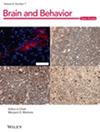A GI-Interoceptive Threat Theory of Restrictive Eating: Insights From Active Inference and Chronic Pain
Abstract
Introduction
Restrictive eating is a common eating disorder (ED) behavior and risk factor. Disturbed body image is also highly associated with the development and maintenance of eating disorders. Yet body image often remains distorted after treatment, and there is little scientific understanding of the mechanisms by which restrictive eating and distorted body image are linked. In parallel, current models of chronic pain describe how fear and negative beliefs about pain lead to avoidance of painful sensations and a threatened response to their occurrence, entrenching a cycle of amplified pain that risks becoming chronic. These models are informed by theories of active inference, which describe how the brain actively shapes sensory experience to reduce prediction errors (discrepancy between predictions and sensory data). This understanding has led to significant advances in the treatment of chronic pain.
Methods
Theories of active inference and central sensitization in chronic pain and ED research on fear of fatness and gastrointestinal (GI) interoception were reviewed and integrated to propose a theoretical model of sensitization of GI sensations in EDs.
Results:
Through the lens of active inference, I propose a hypothesis-generating framework that a fatphobic culture confers beliefs that fatness is bad, driving avoidance. Through dieting—an attempt to avoid fatness—interoceptive sensations of fullness/distention come to signify fatness and are thus construed as threatening. Similar to chronic pain, these sensations become amplified and persistent, distorting body image and entrenching restrictive eating patterns. This framework leads to novel proposals for research and treatment.
Conclusions
Significant theoretical advances may be afforded by considering EDs through models of central sensitization and active inference in chronic pain. I propose mechanistic links between interoception, distorted body image, and restrictive eating, and discuss implications and future directions for research and treatment.


 求助内容:
求助内容: 应助结果提醒方式:
应助结果提醒方式:


